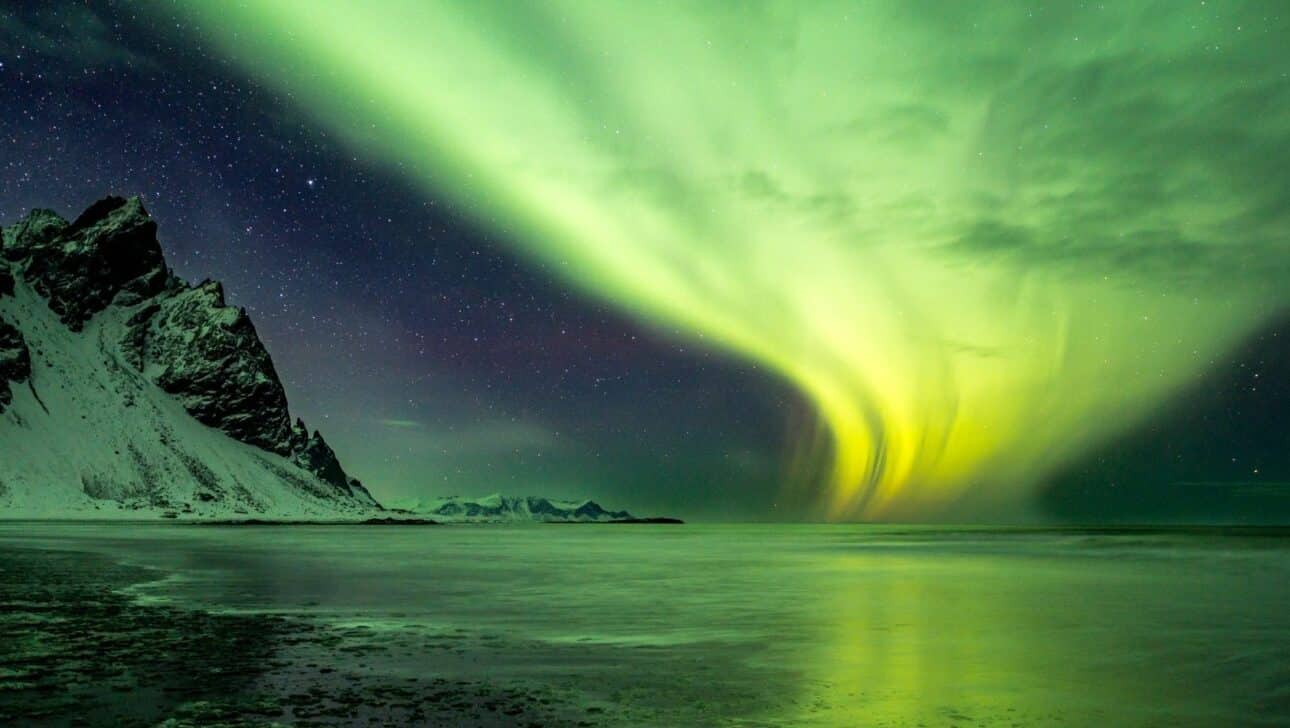Throughout human existence, people have been enthralled by the aurora borealis, commonly known as the northern lights. The ancient Norse believed that this incredible natural light show was the glow of the armor-ed Valkyries, the legendary women warriors who carried fallen heroes to the afterlife. For thousands of years, they’ve been regarded as both a sign of good times and a harbinger of trouble.
On a recent trip to Iceland, I learned quite a bit more about the northern lights. Iceland, after all, is one of the best places in the world to see them. Let’s take a look at this amazing phenomenon – what causes the northern lights, when and where to see them, and why Iceland is THE place to go if you want the best northern lights experience.
What causes the northern lights?
Of course, it’s not Asgardians. The northern lights are the result of charged particles colliding with elements in the earth’s upper atmosphere. These particles are essentially flung at the earth from the sun, either drifting here on what’s known as the solar wind (the sun’s continuous release of particles) or as a result of solar flares (an eruption of high-intensity solar radiation). When these particles collide with the oxygen and nitrogen in our atmosphere, colored light is produced.
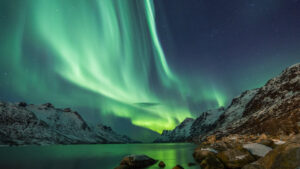
The most common color you’ll see is a hazy green – this is because of nitrogen and oxygen, the two most abundant gases in our atmosphere, produce yellows and greens during this process. There are, however, rare occasions when blue, red, orange and violet hues are produced.
Why do we only see the northern lights in the north and not everywhere?
Why can’t we see them in, say, California? The northern lights are up north for a reason. Most of these solar particles that reach the earth are deflected by the earth’s magnetic field. But because this magnetic field is weaker at both the north and south poles, some particles slip through and enter the upper atmosphere, and thus the polar latitudes get the light show. The optimal viewing zone is above the 60-degree parallel – Iceland sits at 64 degrees north, making it an ideal location for northern lights viewing.
When is the best time of year to see the northern lights?
If you want to plan a trip to see the northern lights, Iceland should be at the top of your destination list. But Atli and Kommi, my Classic Journeys Iceland guides, gave me two bits of advice.
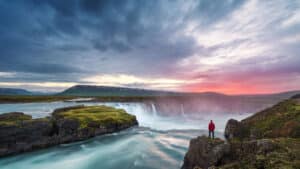
First, you have to visit Iceland at the right time. The northern lights “viewing season” starts at the end of August, and continues through the fall (yes, there is autumn in Iceland – it’s very short, but it does happen!) and winter months, and comes to a close in April. This has less to do with the temperature and a lot more to do with light conditions. In the summer months, Iceland doesn’t actually get dark – during the summer solstice, the sun is visible in Reykjavik for about 21 hours! (This is definitely not good for aurora viewing, but it does present a great opportunity to try what I believe to be The World’s Best Hot Dog.)
What’s the best way to actually see the northern lights?
Here’s where things get a bit tricky. The second bit of advice I received about seeing the northern lights: “cross your fingers”. There is an element of truth here: the northern lights are a direct result of solar activity, and unfortunately, no one can tell the sun what to do. Another big factor: clear skies. Because the aurora happens high up in the atmosphere – and by “high”, we’re talking 50 to 200 miles above the earth’s surface – low clouds can block the view. If the sky isn’t relatively clear, the northern lights will be hidden. That said, it is possible to stack the odds of seeing the northern lights in your favor.
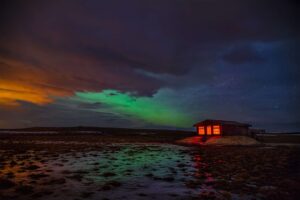
Here’s what savvy aurora hunters do:
Check the forecast.
Before you head out, it’s a good idea to see what the evening’s cloud cover will look like. Happily, the Icelandic Meteorological Office is here to help. Their website offers an easy-to-read Cloud Cover Forecast page that’ll let you know if you’ll have a clear night. Better still, the site has an Aurora Forecast page that will let you know the evening’s predicted level of auroral activity.
Get out of town.
For the best possible northern lights Iceland viewing experience, you’ll want it to be as dark as possible, which means that you’ll to be away from populated areas. Those town and city lights will affect the view. If you’re staying in Reykjavik, you’ll want to drive at least 15 minutes outside of the city limits. If you’re renting a car and want to venture out on your own, you can have confidence that the roads will be safe and clear – the Icelandic highway system is extremely well-maintained, there won’t be a lot of traffic, and there are plenty of pull-off locations for safe viewing. That said…
Go with a guide.
An experienced local guide can be invaluable when embarking on a nighttime trip into the Icelandic countryside. First, your guide will help outfit you for your excursion – it’s going to be cold, and you’ll need to make sure you’re dressed properly.
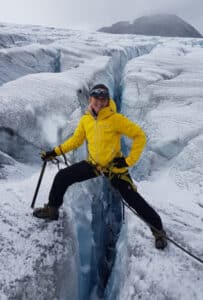
Second, as I discovered on my trip to Iceland, the whole country is stunning, but there are some incredible sights that you’ll miss unless you know exactly where to look. It’s easy to drive by a beautiful Icelandic lagoon or hidden canyon in the daytime – at night, having an expert set of eyes guiding you will ensure that you don’t miss out on some truly spectacular views. And a great guide will know the best spots to pull off and see the northern lights – as well as the best ways to photograph them. Finally, your guide will drive, so you won’t miss a thing on the trip.
If you’re ready to search for the northern lights, Iceland awaits. And Classic Journeys can help. Book one of our Iceland tours today.

